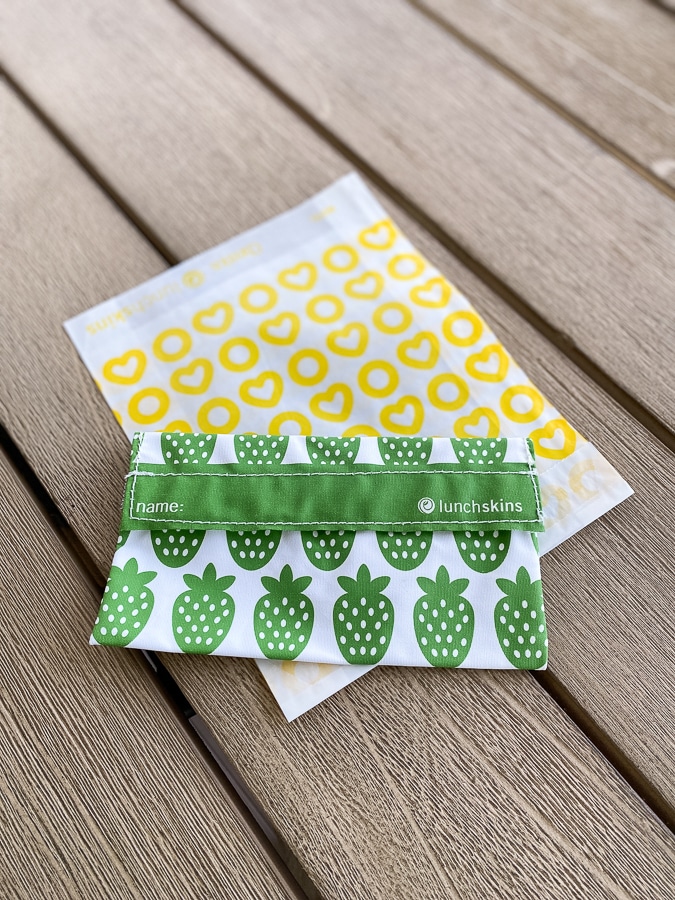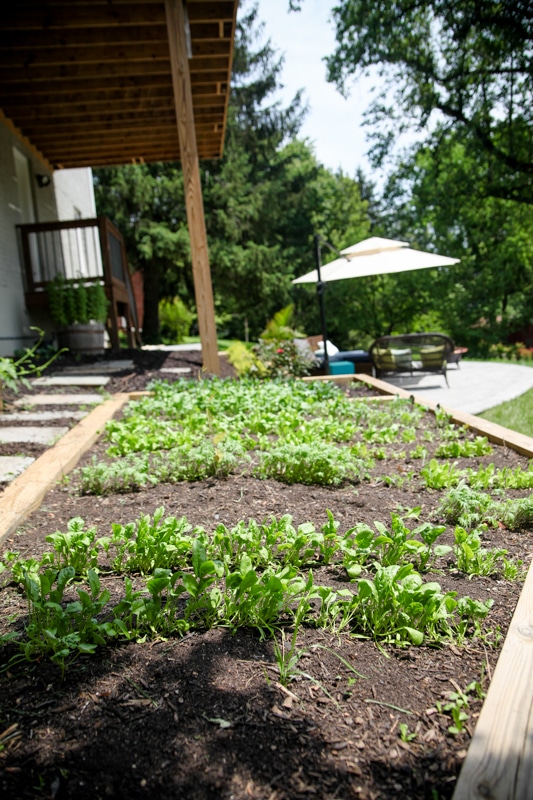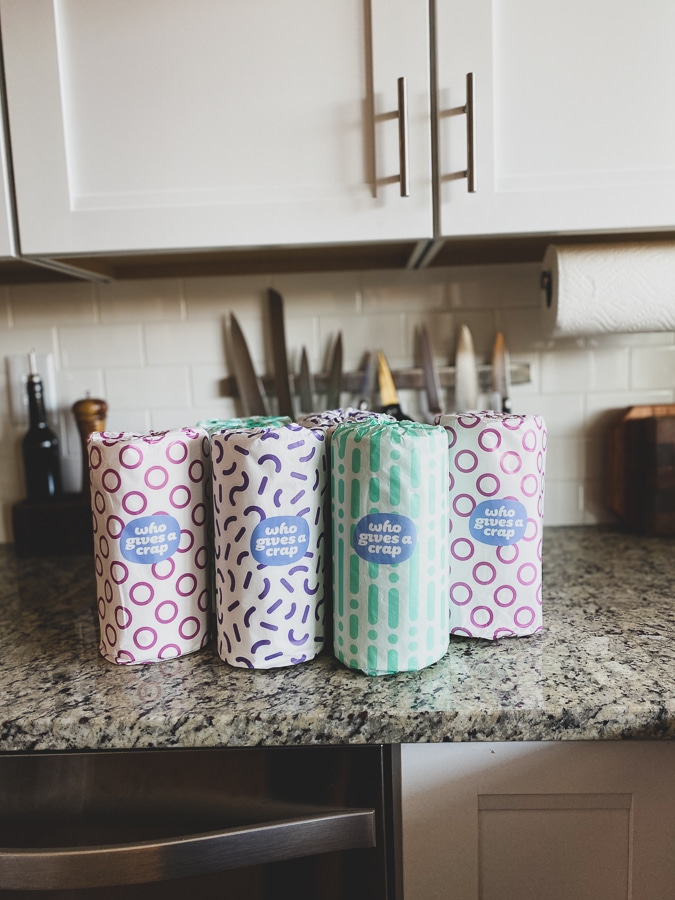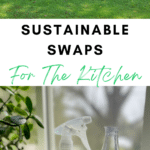
Sustainable Kitchen Swaps I’ve Made
Table of Contents
There are so many things you can do to “go green” at home that sometimes it feels overwhelming. I’m sharing sustainable swaps I’ve made in my kitchen and around the home.
April Is Earth Month!
There are a 100+ things you can do to “go green” at home. Sometimes I feel bad for not doing them all, but we should all be striving for progress not perfection. Do the best you can to make sustainable choices dependent on your environment, time, resources, etc.
For example, if you live in an apartment in a city, having a compost bin may not be at the top of your list (unless your building has a compost system in place!), but you can use reusable cloths instead of paper towels or reduce waste by visiting a product refill station shop to minimize single-use plastic.
That said, I know just how important it is for the wellness of our planet to reduce, reuse, and recycle.
Whether that’s using shopping brands that prioritize sustainable packaging (like Beautycounter!), reusing bags or using cloth bags instead of wrapping paper for gifts, walking the kids to school instead of driving, or giving a tub full of too-small kids clothing to a friend as hand-me-downs, these are just a few of the ways I do my part to live a more sustainable life.
But, today, I want to talk about sustainability just in the kitchen. Here are just a handful of eco-friendly kitchen swaps that add up to something greater. Bonus: going green usually saves you money, too!
Sustainable Swaps I’ve Made In My Kitchen
1. Silicone, Cloth or Paper Bags
While using a washable container or Lunchskins bag is ideal, sometimes you need something disposable or super lightweight. Instead of plastic sandwich bags (because we all know how much plastic and trash winds up in our ocean), we use paper snack bags (like these) or a washable snack cup.
There are so many reusable food storage options out there, so if paper isn’t for you, there are cloth/Velcro ones, cloth food wraps, silicone ones like the popular StasherBag, and of course endless glass Tupperware choices.
I had a less expensive version of Stasher for a while and then purchased two Stashers at my local refill shop, and I can vouch that they are SO MUCH BETTER! They are easier to open, have a flat bottom, and perhaps most importantly, are easier to DRY on the inside. We use them for our frozen banana stash in the freezer, and our monthly bagel haul as well. Go ahead and invest in the biggest size and you can use it for everything.
Lastly, I haven’t made a complete leap to stop using plastic wrap, but there are some really cool alternatives on the market like these reusable food wraps or cloth bowl covers.

2. Gardening (A Little) At Home
Herbs, greens, and tomatoes are all we really have good luck with – but they are better than nothing! This photo is my garden a few years ago – I gotta get it back up to speed! I’ve been using my second child as an excuse and he is old enough to DO some of the gardening now. What a great learning experience!
Not only does gardening save us a few dollars (or more) on food during the summer months, but it means we are growing organic produce (and limiting pesticides/toxins) and minimizing our carbon footprint. If you don’t have your own space for a garden, community gardens are popping up in towns everywhere. And farmer’s markets are a wonderful way to shop and meet local farmers.

3. Composting
Gardening and composting often go hand in hand, but not necessarily. I tried a countertop compost years ago, and while I applaud anyone who does that, it was just a little too gross for me to have inside.
In this house we have a big compost pile between our house and the neighbor’s house that our neighbor maintains and so generously shares with us. We don’t put every eggshell in there, but if I have a bowl’s worth of veggie food scraps or a bunch of watermelon rinds, I send Mazen out to dump it. (He thinks it’s cool because it’s gross.)
Another option we have here are companies who come to your house to pick up your compost. Black Bear Composting here in town is one that some of our other neighbors use.
4. Bento Lunch Boxes
Instead of using disposable containers when packing lunches we use bentos. Not only do they streamline packing and washing (I hate washing tons of little containers!), but it means I can avoid plastic bags. We like the Spencer from Pottery Barn because the sides are really high and it can fit a full sandwich, but there are some great stainless steel options available, too.
I just created a handy download with 75+ kids lunchbox ideas! Download it here!

5. Using Recycled Paper Towels
We use washable cloths and napkins for cleaning counters and wiping hands, and try to save paper towels for bigger spills and messes. We’ve been using the Who Gives a Crap recycled paper towels (and TP) for a few years now for the bigger messes. The more single-use items in your kitchen you can avoid (plastic water bottles, plastic bags, paper napkins, paper plates), the better! (Read my Who Gives A Crap review here!)
There are some really cool cloth rolls at the refill shop like these! I might have to give them a try. Love that they roll up. I’d just need to add a wash bag to the kitchen sink door to get a system for cleaning going.

6. Eco-Friendly Cleaning Supplies
Most of our cleaning supplies, including laundry, are greener choices, and they are also refillable or sustainable to reduce plastic waste. I switched over to Branch Basics plant-based cleaning concentrate for a while. Loved it, but now I’m all in on the refill shop. I have been using a parsley-scented all-purpose spray from there that I love!
I’ve also switched to Dropps for my dishwasher detergent. (Get 25% off Dropps with the code KATH25.)
And for disinfectant, I’m using Force of Nature. Besides being a super-versatile multi-surface cleaner, Force of Nature is an EPA registered sanitizer and disinfectant that kills 99.9% of germs with zero toxic chemicals. You mix the solution yourself on your countertop using this handy little machine, and then it lasts for 2 weeks in the bottle. It’s my Peloton bike cleaner of choice too!

7. Lower Tox Cookware
Another change I’ve been slowly working towards making is improving our cookware. It’s not cheap or reasonable to replace everything all at once, but as your pots and pans break down, invest in something that is made without potentially toxic materials like PFOAs, PTFEs, other PFAs, lead, cadmium, toxic metals, and nanoparticles.
Our Place sent me the Always pan and Perfect Pot and I’ve been loving them. Not only are they gorgeous enough to leave on the stovetop, but the ceramic interior is nonstick too.
We needed new sheet pans and I bought the Caraway Home baking sheets and they are so so great! Caked-on food literally wipes off.



